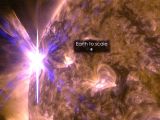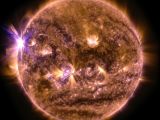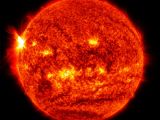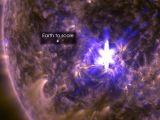This past Tuesday, May 5, the Sun produced yet another monster solar flare. The flare erupted from an area dubbed Active Region 2339 and peaked at 6:11 p.m. EDT, NASA scientists say.
This latest massive burst of radiation documented on the surface of our parent star was classified by researchers as an X2.7-class flare. X-class flares are the absolute most intense that can happen and the number accompanying this label further indicates their strength.
Thus, an X2 flare is twice as powerful as an X1 flare, an X3 is three times as powerful and so on. Tuesday's X2.7 burst is said to have been the strongest flare documented so far this year.
The last time a massive solar flare was observed on the Sun was on March 11. This previous major burst of radiation originated from a sunspot called Active region 12297 and was classified as an X2.2-class flare. Until Tuesday, it was considered the most intense of 2015.
Although harmful radiation resulting from such bursts cannot traverse the atmosphere and reach us on the ground, solar flares can upset GPS and communications signals, specialists say.
In fact, it is understood that the X2.7 solar flare that happened this past May 5 ended up upsetting radio signals across large swathes of the Pacific region. These radio blackouts were only temporary.
The event was thoroughly documented by NASA
Like many others before it, the May 5 flare on the surface of the Sun was closely observed by NASA's Solar Dynamics Observatory, which has been busy studying the star since 2010.
The Solar Dynamics Observatory managed to produce a series of images documenting the event in different wavelengths, i.e. visible light, 171 angstroms, 304 angstroms, 193 angstroms and 131 angstroms. The images in question are available in the gallery below.
Apart from these pictures, the Solar Dynamics Observatory delivered a video showing the solar flare happening. The footage, also available below, comprises a series of views in different wavelengths.
It often happens that solar flares are accompanied by coronal mass ejections, described by astronomers as mammoth clouds of plasma leaving the Sun and heading into space. For the time being, it is unclear whether Tuesday's flare also involved a coronal mass ejection.
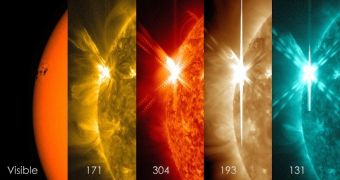
 14 DAY TRIAL //
14 DAY TRIAL // 

